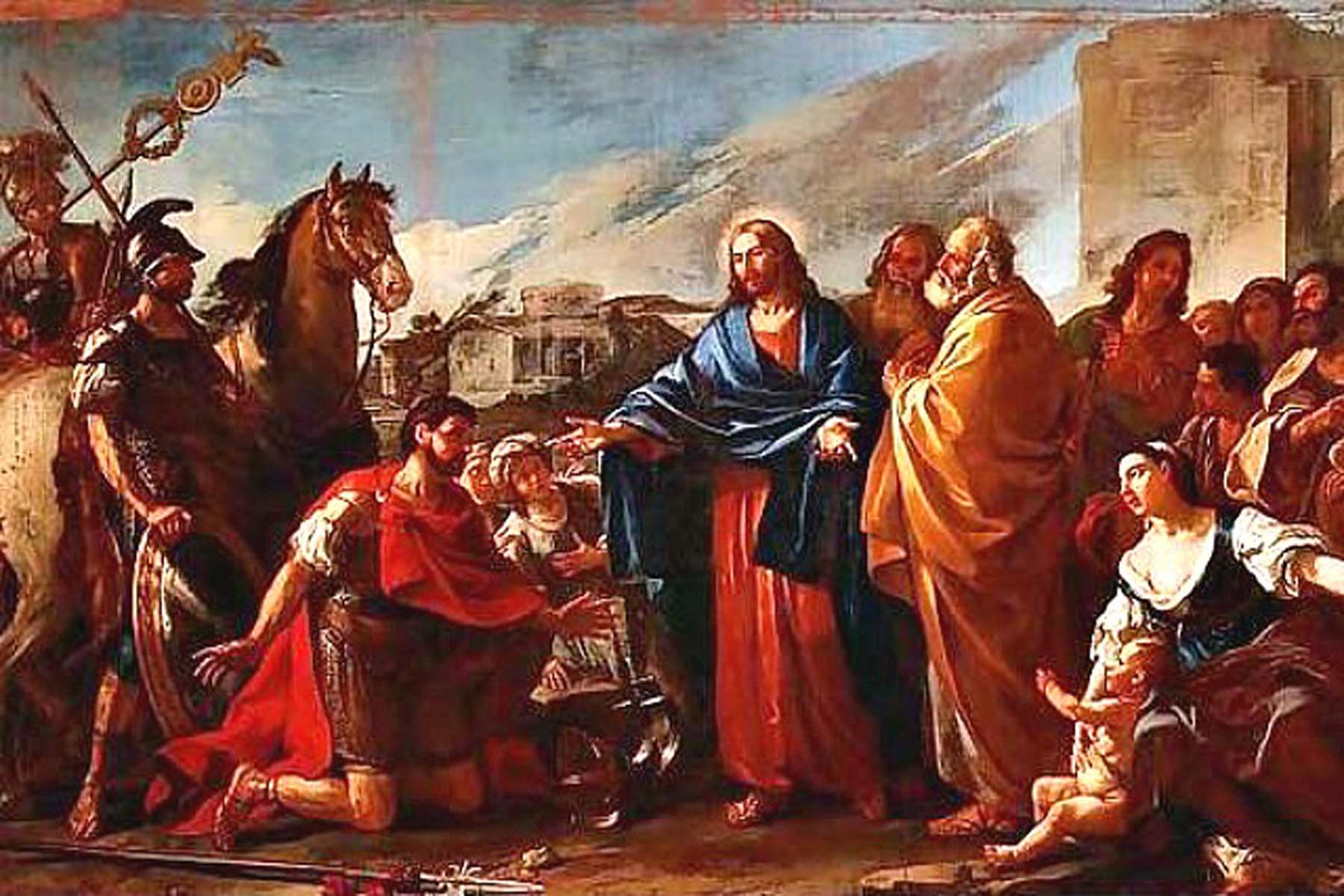
When he heard that Jesus had come out of Judea into Galilee, he went to Him and implored Him to come down and heal his son, for he was at the point of death. Then Jesus said to him, “Unless you people see signs and wonders, you will by no means believe.”
Here’s a related passage, from the end of John: “ ‘Have you believed because you have seen me? Blessed are those who have not seen and yet have believed.’ Now Jesus did many other signs in the presence of the disciples, which are not written in this book; but these are written so that you may believe that Jesus is the Christ, the Son of God, and that by believing you may have life in his name.”
Is Jesus rebuking the nobleman by His words? It sounds like He is, in the tone of what He has said elsewhere, “An evil and adulterous generation seeks a sign, but no sign will be given it but the sign of Jonah.” And in general, that is the gold standard, just as we see Jesus saying to Thomas, “Have you believed because you have seen me? Blessed are those who have not seen and yet have believed.”
The Lord teaches in gold standards while also taking a “pastoral approach” at the bronze and silver levels of standards. Clearly the nobleman needed a miracle for his son. Likewise, Thomas as a future witness needed to see Jesus.
This leads to the conclusion that Jesus isn’t really rebuking so much as stating facts that look like rebukes. The fact is, people need signs and wonders. The gold standard is that people will believe without seeing anything at all, but until that point, Jesus has to work with the reality. Also, Jesus in fact many times over the course of the Gospel of John gave signs. Changing water into wine, the healing of the nobleman’s son, and the feeding of the 5,000 were three of many signs Jesus performed.
St. John tells us he relayed specifically these three – among all the signs – so that we might believe that Jesus is the Christ, the Son of God, and that by believing we might have life in his name. So, a God who works all things for the good uses weakness of faith to reveal truths that strengthen our faith that Jesus is the Christ, the Son of God.
The Wedding at Cana sign reveals that Jesus is the Christ, for the advent of the Christ was contemporaneous with the mountains dripping with sweet wine, as we learn from three Old Testament prophecies. “And it will come to pass in that day That the mountains shall drip with new wine.” (Joel 3: 18)
The feeding of the 5,000 is a sign that Jesus is the Son of God. The Lord had said to Pharaoh, “Israel is My son, My firstborn. So I say to you, let My son go that he may serve Me.” That service entailed the forty year wandering in the wilderness, and Jesus assumed that mantle after His baptism, when the Lord said, “This is my beloved Son.” Jesus entered into the wilderness for forty days bearing the mantle and “service” of the Lord.
God humbles His sons in the wilderness, where they learn not to live by bread alone, but by the Word proceeding from the mouth of God. Well, that Word proceeding from the mouth of the Lord is the Son of God, a word becoming flesh, which is the true bread which comes down from heaven! So, the feeding of the 5,000 is a sign that Jesus is the Son of God, a true “Israel reduced to one.”
That leaves the third sign to prove that “believing, we might have life in His name.” Well, that’s exactly what the nobleman did. His son had life in the name of Jesus, who said, “Your son lives.” And that word was received in faith. Believing, they had life in His name.
But there’s a baptismal piece missing. To believe that Jesus is the Christ, the Son of God is to confess our faith, a faith confessed hand in hand with baptism, as in the baptismal creed, “I believe in Jesus Christ, His only Son, our Lord…” And baptism bestows life “in His name,” that is, the name of the Father and of the Son and of the Holy Spirit. Is there a way in which the healing of the nobleman’s son is a sign of the baptismal event, teaching us that we die with Christ, as He descends into the waters, and join Him as He ascends on high to His heavenly wedding banquet?
Where is Capenaum again relative to Cana? Right next to Galilee, the same Galilee that drowned the demons as Jesus sailed above and “came to His own city”?
Yes, the Holy Spirit issues forth from Jesus, the One “whom the Father will send in [His] name.” And in His name the Holy Spirit “comes down” to Capernaum delivering Jesus’ word, “Your son lives.” As the nobleman went back down to Capernaum, into the region of death and dying, but in the faith of Christ, he came out a new man, he and his whole family, as they confessed faith in Christ.
There’s your baptism, the second sign.